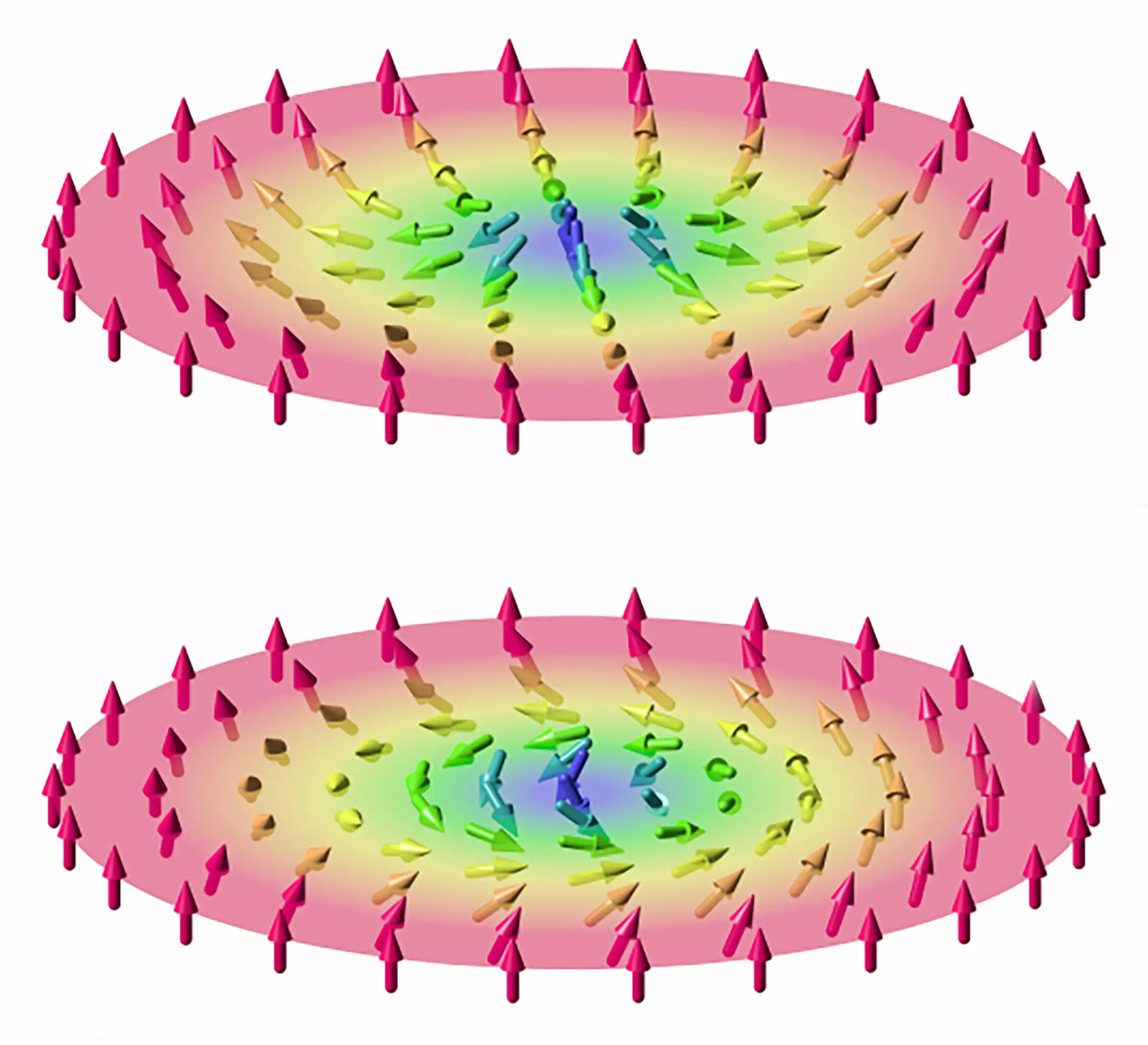In an extraordinary feat of scientific ingenuity, researchers at the National Institute of Standards and Technology (NIST) have made significant strides in the field of spintronics. By utilizing neutron imaging and a reconstruction algorithm, they have successfully unveiled the 3D shapes and dynamics of atomic magnetic formations known as skyrmions. These unique arrangements have the potential to revolutionize information processing and storage by drastically reducing energy consumption. This article delves into the fascinating world of spintronics and explores the promise of magnetic skyrmions in reshaping our technological landscape.
Spintronics, short for spin electronics, is a burgeoning research field that aims to harness the intrinsic magnetic polarity of atomic particles and nanostructures to process and store information. Unlike conventional semiconductor-based methods that rely on electron charge states, spintronics offers a compelling alternative by utilizing stable magnetic states. By exploiting these magnetic properties, spintronic devices can perform calculations and store data using significantly less current and heat, while enabling faster switching times between different states.
Unveiling the Enigma of Skyrmions
One promising candidate in the realm of spintronics is the magnetic skyrmion, an intricate formation of atoms resembling a vortex. Skyrmions naturally occur in specific atomic lattices when influenced by the magnetic and electrical properties of surrounding atoms. In two-dimensional space, they take the shape of disks, with each atom’s magnetic field pointing in different directions based on its position within the disk. However, when in bulk materials, skyrmions stack up vertically, forming intricate 3D tubes that extend from the top to the bottom surfaces of the material.
While the concept of using an array of skyrmions to store data is highly promising, there is a significant hurdle impeding progress. The formation of the tubes within bulk materials is plagued by defects and asymmetries in the lattice structure. As a result, the tubes do not conform to consistent shapes. They display curves, twists, bifurcations, and terminations, making them challenging to manipulate and control. Understanding the cause of these effects and finding ways to manipulate the material is crucial in the pursuit of harnessing skyrmions for practical applications.
Groundbreaking Research Methodology
To shed light on this conundrum, the NIST-led team, in collaboration with researchers from the University of Waterloo, devised an innovative approach. They created bulk samples containing 3D stacks or tubes of skyrmions using a lattice composed of cobalt, zinc, and manganese. These samples were subjected to a groundbreaking neutron tomography, where a beam of neutrons was directed at the material. As the neutrons interacted with the skyrmion tubes, they scattered off in different directions, providing valuable insights into the tubes’ shapes. By rotating the sample incrementally within a magnetic field and combining “slices” obtained through the shape-reconstruction algorithm, the researchers created detailed 3D images of the skyrmion tubes.
Decoding Imperfections
The comprehensive analysis of the 3D images allowed the researchers to discern the relationship between localized defects in the lattice and the shapes of the skyrmion tubes. In a perfect crystal lattice, the tubes would exhibit uniformity and extend seamlessly from surface to surface. However, imperfections in the lattice, such as crystal and magnetic defects, disrupt the tubes’ form. By visualizing and manipulating these objects, scientists can explore and understand how they respond to various parameters. This knowledge paves the way for the development of future materials specifically tailored for spintronics applications.
A Glimpse into the Future
While spintronics and the use of magnetic skyrmions may seem exotic today, their impact on our technological future is poised to be profound. In the coming decade, consumers may be able to purchase hard drives that leverage spintronic properties, offering significantly higher storage density and energy efficiency. The NIST-led research team’s groundbreaking work constitutes a significant stepping stone towards unraveling the mysteries of skyrmions and unlocking their potential for widespread application in spintronics.
The pioneering research conducted by the scientists at NIST has uncovered the intricate world of magnetic skyrmions within bulk materials. By delving into the 3D shapes and dynamics of these atomic formations, they have laid the foundation for the development of spintronic devices that operate with unprecedented energy efficiency and switching speeds. With further advancements in understanding and controlling the imperfections that affect the formation of skyrmion tubes, we may witness a future where spintronics revolutionize the way we process and store information. The fusion of magnetism and data manipulation holds the key to unlocking a new era of technology, where convenience and sustainability go hand in hand.



Leave a Reply